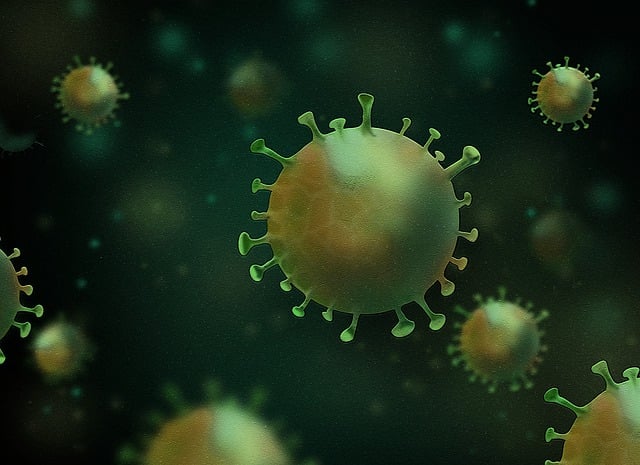The COVID-19 pandemic continues to evolve, with new variants posing challenges to global public health efforts. One such new Covid Variant FLiRT, has recently gained attention for its rapid spread and potential implications for disease severity. Emerging from the Omicron JN.1 variant, FLiRT has quickly spread to various countries, including the US, UK, South Korea, and India, where it has accounted for approximately 250 reported cases to date.
Understanding FLiRT: What is the New Covid Variant FLiRT
FLiRT is a descendant of the Omicron lineage. This term refers to a group of various variants, like KP.2, JN.1.7, and others that start with KP or JN. They all seem to have developed the same set of changes independently. This is called convergent evolution. They come from the JN.1 variant, which has been the main one in the US for a while now. The mutations that people call “FLiRTs” or “FLips” are found in specific spots on the spike protein. These spots are at positions 456, 346, and 572.
Viruses like SARS-CoV-2 change a lot, and sometimes they change to avoid being caught by antibodies. But when they do this, they can’t stick to the cells they want to infect as well. So, they pick up mutations that help them stick better. This is something we’ve seen happen many times with SARS-CoV-2. The fact that different variants are getting the same mutations tells scientists that these mutations are really helping the virus stick to cells better. (Source)
What are the Symptoms of FLiRT?
While FLiRT variants share symptoms with earlier COVID-19 variants, such as fever, cough, and fatigue, they are associated with a heightened transmission rate. However, the US Centers for Disease Control and Prevention (CDC) notes that there are currently no indications suggesting that FLiRT variants cause more severe illness than other strains. Hospitalization rates for patients with FLiRT-related symptoms remain consistent with those observed for previous variants.
Also Read: 7 Fascinating Facts about Disease X: What We Know So Far
How the New Covid Variant FLiRT Spreads and Affects Us?
The FLiRT variants are just as contagious as the JN.1 and earlier Omicron variants. After you’re exposed to the virus, it might take five days or more for symptoms to show up, but they could show up sooner too. You can spread the virus one to two days before you feel sick and for a few days after your symptoms go away. Like before, some people might still have the virus in their body for up to a week after they get sick, and some might have symptoms come back
Keeping FLiRT in Check
To mitigate the spread of FLiRT, it is imperative to adhere to preventive measures. This includes widespread vaccination efforts, including the administration of booster shots, and the utilization of effective respiratory protective measures, such as N95 or KN95 masks, in crowded indoor settings. Furthermore, improving indoor ventilation and implementing rapid testing protocols are vital components of containment strategies.
Who’s Most at Risk
Vulnerable populations, including elderly individuals, pregnant women, and those with compromised immune systems, face increased susceptibility to severe illness from FLiRT. Age-related physiological changes and underlying health conditions heighten the risk of adverse outcomes among these groups, underscoring the importance of targeted preventive interventions and vaccination campaigns.
What is the Reason Behind Naming the New Covid Variant as FLiRT?
The name FLiRT comes from two special changes seen in many versions of the virus that came after the JN.1 variant went around the world last winter. Some of the biggest versions with FLiRT changes in the US are called KP.2 and KP.1.1.
“It’s basically just taking the first letters of the specific changes in the spike protein: F456L + R346T, which means changing phenylalanine (F) to leucine (L) at position 456 and changing arginine [R] to threonine [T] at position 346,” explained Canadian biologist Ryan Gregory, a professor at the University of Guelph, in an email to CBS News.
Gregory came up with this name in March, and many people who keep track of the different versions of the virus liked it. Even though it’s not official, these nicknames have become well-known names for many virus variants.
FLiRT became more popular than another name, “tiLT” variants, which was thought up by Australian consultant Mike Honey. FLiRT is used for a bunch of versions of the virus that grow faster than JN.1, like KP.2.
“Basically, right now, almost everything comes from BA.2.86.1.1 (JN.1) and things are changing fast, so it’s better to focus on the important changes instead of each version,” Gregory explained. (Source)
FLiRT serves as an important reminder of the ongoing threat posed by COVID-19 variants and the necessity of collective action to curb transmission. By remaining vigilant, adhering to public health guidance, and embracing preventive measures, we can be prepared much against the challenges presented by FLiRT and at the same time safeguard the health and well-being of individuals and communities worldwide.





